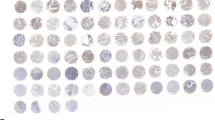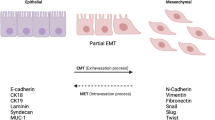Abstract
Matrix metalloproteinase-9 (MMP-9) plays a vital role in tumor angiogenesis, cell migration, and invasiveness because it can degrade almost all basement membrane and extracellular matrix components. MMP-9 has been reported in many cancers including breast cancer, lung cancer, and colon cancer. ΔFosB in mammary epithelial cells has been shown to regulate cell proliferation, differentiation, and death. We found that ΔFosB increased the expression of MMP-9 in MCF-7 breast cancer cells. ΔFosB overexpression in MCF-7 cells increased cellular viability and decreased cell apoptosis. SB-3CT, an inhibitor of MMP-9, promoted apoptosis, inhibited cell proliferation, induced cell cycle arrest, and downregulated the expression of antiapoptotic genes Bcl-2 and Bcl-xl in MCF-7 cells. ΔFosB increased the number of MCF-7 cells in G2/M and S phases, upregulated the expression of Bcl-2 and Bcl-xl, and protected MCF-7 cells from apoptosis induced by MMP-9 inhibition. We also found that ΔFosB overexpression in MCF-7 cells inhibited Ca2+-induced apoptosis and promoted cell proliferation. Therefore, ΔFosB may be a potential target in breast cancer cell apoptosis by regulating the expression of MMP-9.









Similar content being viewed by others
References
Shaulian E, Karin M. Ap-1 as a regulator of cell life and death. Nat Cell Biol. 2002;4:E131–6.
Shaulian E, Karin M. Ap-1 in cell proliferation and survival. Oncogene. 2001;20:2390–400.
Chu W-M. Tumor necrosis factor. Cancer Lett. 2013;328:222–5.
Sabatakos G, Sims N, Chen J, Aoki K, Kelz M, Amling M, et al. Overexpression of δfosb transcription factor(s) increases bone formation and inhibits adipogenesis. Nat Med. 2000;6:985–90.
Tahara K, Tsuchimoto D, Tominaga Y, Asoh S, Ohta S, Kitagawa M, et al. Δfosb, but not fosb, induces delayed apoptosis independent of cell proliferation in the rat1a embryo cell line. Cell Death Differ. 2003;10:496–507.
Miura T, Ohnishi Y, Kurushima H, Horie H, Kadoya T, Nakabeppu Y. Regulation of the neuronal fate by δfosb and its downstream target, galectin-1. Curr Drug Targets. 2005;6:437–44.
Smith LM, Wise SC, Hendricks DT, Sabichi AL, Bos T, Reddy P, et al. Cjun overexpression in mcf-7 breast cancer cells produces a tumorigenic, invasive and hormone resistant phenotype. Oncogene. 1999;18:6063–70.
Kurushima H, Ohno M, Miura T, Nakamura T, Horie H, Kadoya T, et al. Selective induction of δfosb in the brain after transient forebrain ischemia accompanied by an increased expression of galectin-1, and the implication of δfosb and galectin-1 in neuroprotection and neurogenesis. Cell Death Differ. 2005;12:1078–96.
Kveiborg M, Sabatakos G, Chiusaroli R, Wu M, Philbrick WM, Horne WC, et al. Δfosb induces osteosclerosis and decreases adipogenesis by two independent cell-autonomous mechanisms. Mol Cell Biol. 2004;24:2820–30.
Daniele A, Zito A, Giannelli G, Divella R, Asselti M, Mazzocca A, et al. Expression of metalloproteinases mmp-2 and mmp-9 in sentinel lymph node and serum of patients with metastatic and non-metastatic breast cancer. Anticancer Res. 2010;30:3521–7.
Bellafiore M, Battaglia G, Bianco A, Farina F, Palma A, Paoli A. The involvement of mmp-2 and mmp-9 in heart exercise-related angiogenesis. J Transl Med. 2013;11:283.
Merkle M, Ribeiro A, Sauter M, Ladurner R, Mussack T, Sitter T, et al. Effect of activation of viral receptors on the gelatinases mmp-2 and mmp-9 in human mesothelial cells. Matrix Biol. 2010;29:202–8.
Fernández CA, Yan L, Louis G, Yang J, Kutok JL, Moses MA. The matrix metalloproteinase-9/neutrophil gelatinase-associated lipocalin complex plays a role in breast tumor growth and is present in the urine of breast cancer patients. Clin Cancer Res. 2005;11:5390–5.
Cortes-Reynosa P, Robledo T, Macias-Silva M, Wu SV, Salazar EP. Src kinase regulates metalloproteinase-9 secretion induced by type iv collagen in mcf-7 human breast cancer cells. Matrix Biol. 2008;27:220–31.
Coussens LM, Tinkle CL, Hanahan D, Werb Z. Mmp-9 supplied by bone marrow–derived cells contributes to skin carcinogenesis. Cell. 2000;103:481–90.
Bergers G, Brekken R, McMahon G, Vu TH, Itoh T, Tamaki K, et al. Matrix metalloproteinase-9 triggers the angiogenic switch during carcinogenesis. Nat Cell Biol. 2000;2:737–44.
Aalinkeel R, Nair MP, Sufrin G, Mahajan SD, Chadha KC, Chawda RP, et al. Gene expression of angiogenic factors correlates with metastatic potential of prostate cancer cells. Cancer Res. 2004;64:5311–21.
Farina AR, Cappabianca L, DeSantis G, Di Ianni N, Ruggeri P, Ragone M, et al. Thioredoxin stimulates mmp-9 expression, de-regulates the mmp-9/timp-1 equilibrium and promotes mmp-9 dependent invasion in human mda-mb-231 breast cancer cells. FEBS Lett. 2011;585:3328–36.
Liacini A, Sylvester J, Li WQ, Zafarullah M. Inhibition of interleukin-1-stimulated map kinases, activating protein-1 (ap-1) and nuclear factor kappa b (nf-kappa b) transcription factors down-regulates matrix metalloproteinase gene expression in articular chondrocytes. Matrix Biol. 2002;21:251–62.
Troussard AA, Costello P, Yoganathan TN, Kumagai S, Roskelley CD, Dedhar S. The integrin linked kinase (ilk) induces an invasive phenotype via ap-1 transcription factor-dependent upregulation of matrix metalloproteinase 9 (mmp-9). Oncogene. 2000;19:5444–52.
Lee S-O, Jeong Y-J, Im HG, Kim C-H, Chang Y-C, Lee I-S. Silibinin suppresses pma-induced mmp-9 expression by blocking the ap-1 activation via mapk signaling pathways in mcf-7 human breast carcinoma cells. Biochem Biophys Res Commun. 2007;354:165–71.
Kim S, Choi JH, Kim JB, Nam SJ, Yang J-H, Kim J-H, et al. Berberine suppresses tnf-α-induced mmp-9 and cell invasion through inhibition of ap-1 activity in mda-mb-231 human breast cancer cells. Molecules. 2008;13:2975–85.
Zheng H, Li H, Li L, Ma S, Liu X. Δfosb regulates Ca2+ release and proliferation of goat mammary epithelial cells. Gene. 2014;545:241–6.
Zhu J, Luo J, Sun Y, Shi H, Li J, Wu M, et al. Short communication: effect of inhibition of fatty acid synthase on triglyceride accumulation and effect on lipid metabolism genes in goat mammary epithelial cells. J Dairy Sci. 2015;98:3485–91.
Lin C-W, Hou W-C, Shen S-C, Juan S-H, Ko C-H, Wang L-M, et al. Quercetin inhibition of tumor invasion via suppressing pkcδ/erk/ap-1-dependent matrix metalloproteinase-9 activation in breast carcinoma cells. Carcinogenesis. 2008;29:1807–15.
Li H, Zheng H, Sun Y, Yu Q, Li L. Signal transducer and activator of transcription 5a inhibited by pimozide may regulate survival of goat mammary gland epithelial cells by regulating parathyroid hormone-related protein. Gene. 2014;551:279–89.
Zhivotovsky B, Orrenius S. Calcium and cell death mechanisms: a perspective from the cell death community. Cell Calcium. 2011;50:211–21.
Crowe DL, Brown TN. Transcriptional inhibition of matrix metal loproteinase 9 (mmp-9) activity by a c-fos/estrogen receptor fusion protein is mediated by the proximal ap-1 site of the mmp-9 promoter and correlates with reduced tumor cell invasion. Neoplasia. 1999;1:368–72.
Pratap J, Wixted JJ, Gaur T, Zaidi SK, Dobson J, Gokul KD, et al. Runx2 transcriptional activation of Indian hedgehog and a downstream bone metastatic pathway in breast cancer cells. Cancer Res. 2008;68:7795–802.
Leifler KS, Svensson S, Abrahamsson A, Bendrik C, Robertson J, Gauldie J, et al. Inflammation induced by mmp-9 enhances tumor regression of experimental breast cancer. J Immunol. 2013;190:4420–30.
Chen HB, Gao WW, Yang Y, Guo SY, Wang H, Wang W, et al. Inhibition of vdac1 prevents Ca2+-mediated oxidative stress and apoptosis induced by 5-aminolevulinic acid mediated sonodynamic therapy in thp-1 macrophages. Apoptosis. 2014;19:1712–26.
Lam M, Dubyak G, Chen L, Nunez G, Miesfeld RL, Distelhorst CW. Evidence that bcl-2 represses apoptosis by regulating endoplasmic reticulum-associated Ca2+ fluxes. Proc Natl Acad Sci. 1994;91:6569–73.
Rong Y, Distelhorst CW. Bcl-2 protein family members: versatile regulators of calcium signaling in cell survival and apoptosis. Annu Rev Physiol. 2008;70:73–91.
Greenberg EF, Lavik AR, Distelhorst CW. Bcl-2 regulation of the inositol 1, 4, 5-trisphosphate receptor and calcium signaling in normal and malignant lymphocytes: potential new target for cancer treatment. Biochim Biophys Acta (BBA)-Mol Cell Res. 2014;1843:2205–10.
Acknowledgments
This work was supported by the “National Natural Science Foundation of China (No. 31572368)” and “Special Fund for Agro-scientific Research in the Public Interest (No.201103038)”.
Author information
Authors and Affiliations
Corresponding author
Ethics declarations
Conflicts of interest
None.
Additional information
Hui Li and Lihui Li contributed equally to this work.
Electronic supplementary material
Below is the link to the electronic supplementary material.
Fig. S1
ΔFosB increases MMP-9 expression in cultured MCF-7 breast cancer cells. The MCF-7 cells were transduced with ΔFosB interference recombinant adenoviruses Ad-ΔFosB-572 for 24 h and subsequently were transduced with overexpression recombinant adenoviruses Ad-ΔFosB for 48 h. MMP-9 mRNA levels were analyzed by quantitative real-time PCR (RT-qPCR). Values are means ± SEM (n = 3). *P<0.05; **P<0.01; *** P<0.001. Ad-ΔFosB the overexpression recombinant adenoviruses of ΔFosB, Ad-ΔFosB-572 the interference recombinant adenoviruses of ΔFosB. (GIF 21 kb)
Fig. S2
ΔFosB-dependent protection from SB-3CT-induced cell apoptosis in MCF-7 breast cancer cells. MCF-7 cells were transduced with Ad-ΔFosB or Ad-ΔFosB-572 for 48 h and subsequently exposed to different concentrations of SB-3CT for 24 h. Cell apoptosis was determined by Annexin V-FITC/PI binding followed by flow cytometry. Values are means ± SEM (n = 3). *P<0.05; **P<0.01; *** P<0.001. Ad-ΔFosB the overexpression recombinant adenoviruses of ΔFosB, Ad-ΔFosB-572 the interference recombinant adenoviruses of ΔFosB, SB-3CT an inhibitor of MMP-9. (GIF 45 kb)
Fig. S3
ΔFosB-dependent protection from Ca2+-induced cell apoptosis in MCF-7 breast cancer cells. MCF-7 cells were transduced with Ad-ΔFosB or Ad-ΔFosB-572 for 48 h, and subsequently exposed to different concentrations of Ca2+ for 24 h. Cell apoptosis was determined Annexin V-FITC/PI binding followed by flow cytometry. Values are means ± SEM (n = 3). *P<0.05; **P<0.01; *** P<0.001. Ad-ΔFosB the overexpression recombinant adenoviruses of ΔFosB, Ad-ΔFosB-572 the interference recombinant adenoviruses of ΔFosB. (GIF 49 kb)
Fig. S4
The effects of Ca2+ on the mRNA expression of ΔFosB and MMP-9. MCF-7 cells were treated with different concentrations of Ca2+ for 24 h, and the mRNA levels of ΔFosB and MMP-9 were analyzed by quantitative real-time PCR (RT-qPCR). Values are means ± SEM (n = 3). *P<0.05; **P<0.01; *** P<0.001. (GIF 15 kb)
Rights and permissions
About this article
Cite this article
Li, H., Li, L., Zheng, H. et al. Regulatory effects of ΔFosB on proliferation and apoptosis of MCF-7 breast cancer cells. Tumor Biol. 37, 6053–6063 (2016). https://doi.org/10.1007/s13277-015-4356-4
Received:
Accepted:
Published:
Issue Date:
DOI: https://doi.org/10.1007/s13277-015-4356-4




